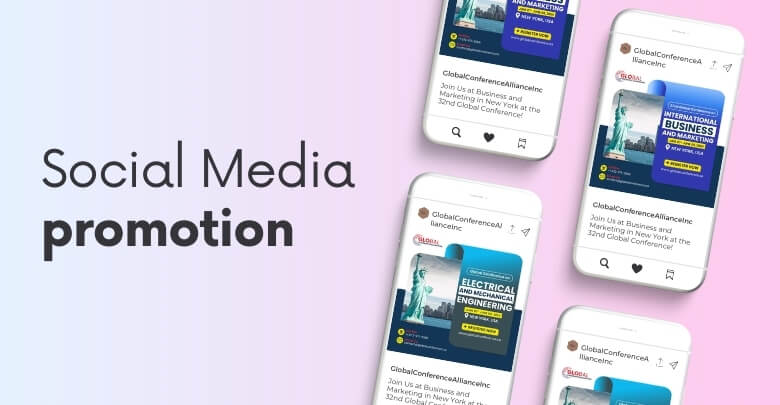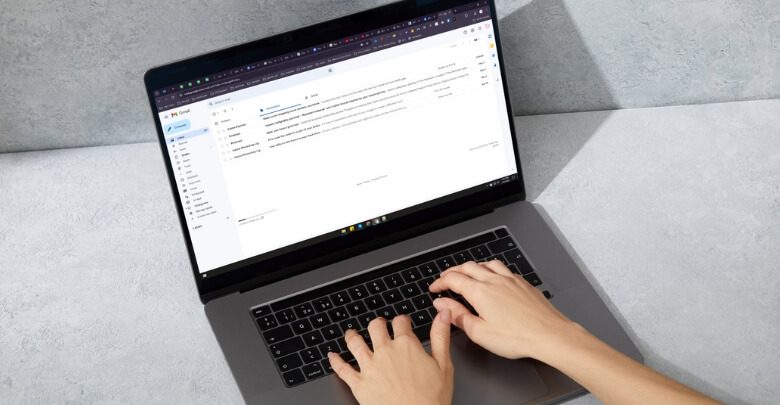Conferences are excellent ways for networking, knowledge sharing, and professional development. These bring together experts, industry leaders, and enthusiasts to discuss important issues and trends in a particular field.
However, organizing a conference is only half the battle. Without effective advertising, a conference can fail to attract the right audience and remain unknown to potential attendees. Let’s find out, how to advertise a conference effectively?
To advertise a conference effectively, you’ll need to utilize various channels like social media, email marketing, and targeted ads. Highlight key speakers, topics, and unique features to attract attendees and create buzz.
This article aims to provide insights into how to advertise a conference effectively. It will discuss the importance of identifying the target audience, developing a marketing plan, leveraging social media, using email marketing, and measuring the results.
Key Takeaways
- Identifying the target audience is essential for tailoring the marketing campaign to their interests and preferences.
- Leveraging social media and collaborating with influencers can increase the visibility and credibility of the conference.
- Effective messaging and visual design play a significant role in capturing the attention of potential attendees.
- Measuring the success of promotional strategies is crucial for conference organizers to determine the effectiveness of their marketing campaigns.
Identify Your Target Audience
A successful marketing campaign starts with carefully identifying the right audience for the conference. Just as a guided missile precisely reaches its target, a well-planned strategy ensures the message reaches the right people. This requires thorough research and audience segmentation, helping organizers understand their attendees’ behaviors, needs, and expectations.
Organizers can gather essential demographic information about potential attendees by conducting demographic research, such as their age, gender, education, income, and occupation. Audience segmentation then refines this data, dividing the audience into smaller groups based on their preferences and behaviors. For instance, organizers planning a conference in Canada or other popular event destinations like the United States, Germany, or Australia must consider regional trends and industry demands to optimize their outreach.
Using these insights, conference organizers can design marketing campaigns that speak directly to their target audience. This approach ensures advertising messages align with attendees’ interests, increasing engagement and event participation. A well-tailored strategy makes the conference more appealing, ultimately boosting attendance and overall event success.
Develop a Marketing Plan
If you are planning for a conference, you’ll need to develop marketing strategies. This strategy involves several essential steps:
- Setting clear goals and objectives to define the conference’s purpose and what it aims to achieve.
- Creating a budget and timeline to allocate resources and plan necessary marketing activities.
- Choosing the right advertising channels ensures the conference’s message effectively reaches the intended audience.
By following these steps, conference organizers can develop a comprehensive marketing plan that helps promote their event successfully.
Set Clear Goals and Objectives
Establishing clear goals and objectives is crucial for successfully advertising a conference. Without a clear sense of what you want to achieve, creating a marketing plan that will resonate with your target audience will be difficult.
Measuring success and setting priorities are two essential components of this process. Here are some key considerations to remember when setting goals and objectives for your conference:
- Define Your Target Audience: Who are you trying to reach with your conference? What are their needs and interests? Understanding your audience is essential for crafting a message that will resonate with them.
- Determine Your Key Messages: What are the key takeaways you want your attendees to leave with? What are the unique selling points of your conference? Clarifying your messaging will help you create a compelling marketing campaign.
- Set Specific, Measurable Goals: What do you want to achieve with your conference? Do you want to increase attendance, generate leads, or build brand awareness? Set specific goals that you can measure to track your progress.
- Align Your Goals With Your Budget: Your goals should be realistic and achievable, given your budget and resources. Ensure your goals align with your overall marketing plan and budget.
Create a Budget and Timeline
Crafting a comprehensive and calculated budget and timeline is crucial for successfully marketing a colloquium. You should have a clear understanding of the costs involved in advertising the conference.
The budget should include expenses such as venue rental, catering, printing costs, and promotional materials. Consider cost-effective strategies to minimize expenses without compromising the quality of the event. This can include partnering with sponsors or leveraging social media platforms to reach a wider audience.
Scheduling considerations are also important when creating a marketing timeline. Determine the optimal time to advertise the conference to ensure maximum attendance.
The timeline should include deadlines for promotional materials such as flyers, brochures, and website updates. Consider the lead time required for conference attendees to plan travel and accommodation.
In that case, you can try getting funds for your conference from different sponsors. Just you’ll have to create a compelling proposal highlighting the event’s benefits, target potential sponsors, and consider applying for grants or seeking partnerships.
Choose the Right Advertising Channels
Selecting appropriate platforms to reach the intended audience is critical to effectively marketing a colloquium. The advertising budget, audience demographics, and the nature of the colloquium are key factors to consider when choosing the right advertising channels. Effective messaging and visual design also play a significant role in capturing the attention of potential attendees.
In selecting advertising channels, consider the audience demographics. For instance, if the intended audience is professionals in a particular field, advertising in trade publications or industry-specific websites may prove effective. Social media platforms such as LinkedIn and Twitter can also be useful in targeting specific audiences.
You can also create different posters that reflect your conference perspectives to your audiences. In that case, you’ll need to know where to print the posters. This is because printing posters in the wrong place can cause failure to present the conference’s central theme.
Additionally, email marketing or direct mail can effectively reach a wider audience. Ensure the messaging and visual design are tailored to the specific advertising channel to maximize impact.
Leveraging social media is an effective way to increase the visibility of a conference. By creating a social media presence, conference organizers can promote the event through targeted advertising, engaging content, and interacting with potential attendees.
Social media platforms such as Twitter, Instagram, and LinkedIn provide opportunities to engage with the audience and build excitement leading up to the conference. By leveraging the right advertising channels and utilizing effective messaging and visual design, conference organizers can increase the visibility and attendance of their events.
Leverage Social Media To Advertise A Conference
Social media has become an essential tool for promoting conferences. One effective way to leverage social media is by creating a unique hashtag that captures the essence of the event and encourages attendees to share their experiences.
Paid social media ads can also reach a wider audience and increase engagement. Collaborating with industry influencers can also help increase the visibility and credibility of the conference.
By utilizing these strategies, conference organizers can effectively leverage social media to promote their events and increase attendance.
Create a Hashtag
To maximize the reach and impact of a conference, devise a unique and memorable hashtag that captures the essence of the event and encourages audience engagement.
By creating a hashtag, attendees can easily engage with each other on social media and share their experiences with a wider audience. This creates a sense of community among attendees and allows conference organizers to track analytics and measure the event’s success.
A good hashtag should be short, catchy, and easy to remember. It should also be relevant to the conference theme and reflect the event’s goals. Conference organizers should use the hashtag in all their social media posts and encourage attendees to do the same.
Use Paid Social Media Ads
Implementing a targeted paid social media campaign can significantly enhance the reach and effectiveness of conference marketing efforts. With billions of active users on social media platforms, advertising through these channels can maximize the reach of potential attendees.
Ad copy optimization is crucial in capturing the audience’s attention and prompting them to take action. Here are some ways to maximize the reach of paid social media ads:
- Use eye-catching visuals and videos to capture attention and convey key messaging.
- Utilize audience targeting and retargeting to reach individuals who have previously interacted with the conference or are in the relevant industry.
- Test and refine ad copy to ensure it resonates with the target audience and effectively communicates the value of attending the conference.
Collaborate with Influencers
Engaging with prominent figures in the industry can be a valuable strategy in expanding the reach of a conference, as evidenced by a survey that found that 72% of consumers trust influencers more than traditional advertisements.
Partnering with micro-influencers who have a strong following in a specific niche can help generate buzz around the conference. These influencers can be bloggers, social media personalities, or industry experts who have built a loyal audience.
Building personal relationships with influencers can be achieved through direct messages, attending events where they speak, or offering exclusive access to the conference.
In addition, collaborating with influencers can also help to create more engaging content for the conference. This can offer their unique perspective on the event, creating buzz before and after the conference.
By partnering with influencers, conference organizers can tap into an audience that they may not have been able to reach on their own. This strategy can help to increase attendance and generate more interest in the conference.
Use Email Marketing to Promote a Conference
Utilizing email marketing to promote a conference serves as a cost-effective and efficient means of reaching a targeted audience, allowing for personalized communication and the ability to track engagement metrics.
Conference organizers can use email templates and segmentation techniques to create customized messages that resonate with different audience segments. This approach increases the likelihood of engagement and helps build a stronger relationship with attendees.
To further enhance the effectiveness of email marketing, conference organizers can leverage other tactics, such as A/B testing subject lines, optimizing email content for mobile devices, and providing incentives for attendees to share information about the conference with their networks.
By implementing these strategies, conference organizers can ensure that their email campaigns are engaging and effective in driving attendance.
Measure Your Results
Measuring the success of promotional strategies is crucial for conference organizers to determine the effectiveness of their marketing campaigns. Tracking attendance and analyzing feedback are two essential methods to evaluate the impact of advertising efforts.
Organizations can track attendance by tracking how many people showed up and comparing it to the previous year’s attendance. This information will help organizers understand which strategies worked and which did not.
Analyzing feedback is another crucial element of measuring the success of a promotional campaign. It allows organizers to find out what worked well and what didn’t, enabling them to make necessary adjustments to improve their future advertising efforts.
Feedback can be collected through surveys, social media, or direct communication. A simple feedback form can be created and distributed to attendees after the conference to gather their thoughts and opinions about the event.
By analyzing feedback, organizers can gain valuable insights about their promotional strategies and make informed decisions to enhance the overall conference experience.
| Methods | Advantages | Disadvantages |
| Tracking attendance | Provides an accurate measure of success | Does not provide insights into attendee satisfaction |
| Analyzing feedback | Helps identify areas for improvement | Responses may not be representative of all attendees |
Wrapping Up
Advertising a conference is a complex process that requires careful planning and execution. Conference organizers can effectively reach and engage potential attendees by identifying the target audience, developing a comprehensive marketing plan, and leveraging social media and email marketing.
Measuring the results of these efforts is critical in determining their success and making adjustments for future conferences. With these strategies in place, organizers can maximize the impact of their conference and ensure its success.








